Introduction:
Jaigarh Fort was built by Sawai Jai Singh in 1726, to protect the Amer Fort and function primarily as a storehouse of artillery such as cannons, arms and ammunitions. This fort is considered one of the strongest monuments of Jaipur. Interestingly, this fort is also known as “The Victory Fort” because it has never been conquered!
To appreciate the significance of why this fort is so remarkably renown, a short geography lesson on the fort’s location, is in order 🙂 .
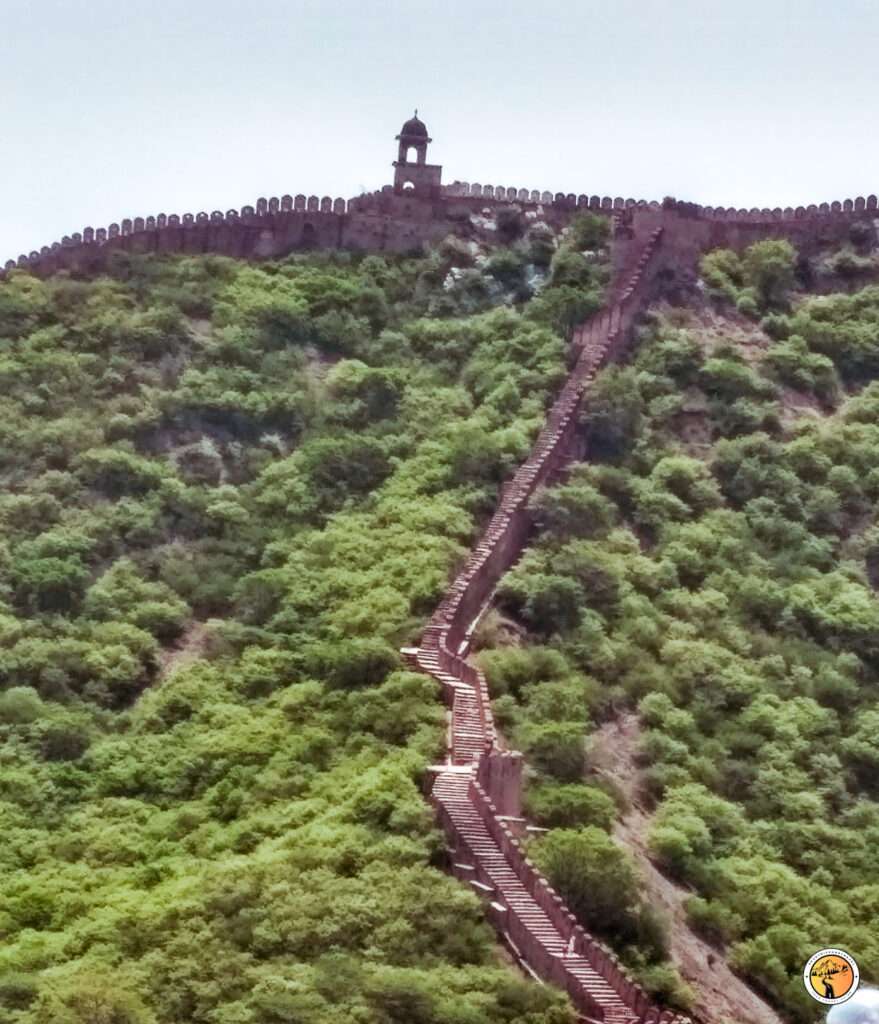
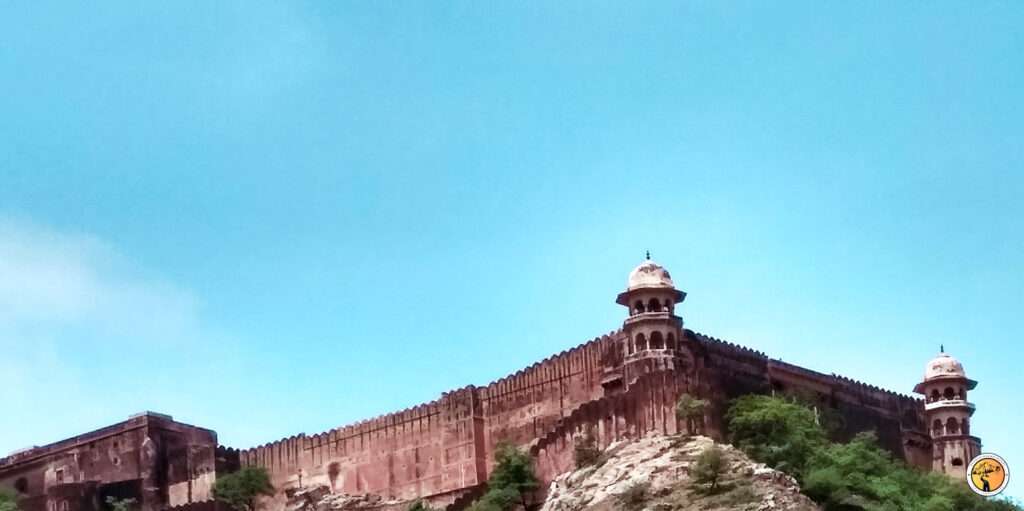
Information about Jaigarh Fort:
Location:
Jaigarh Fort sits on a Promontory. A Promontory is a raised mass of land (usually a rock) that extends into a lowland or a body of water. Promontories offer a natural defense against enemies due to their strategic position at the edge of a landmass. Moreover, promontories are often surrounded by water, which makes them naturally inaccessible. This is the reason why many ancient and modern forts and castles have been built on promontories and Jaigarh fort is no different!
Jaigarh Fort is situated on Cheel ka Teela (Hill of Eagles or Eagle’s Peak) which is a natural promontory and is a part of the sturdy Aravalli range overlooking the Maota Lake. This palatial fort, a stronghold of the Kachwaha Rajput rulers, guards the Amer Fort from an elevation of 400 metres above it.
Address:
Devisinghpura, Amer, Jaipur, Rajasthan 302028, India.
How to get to Jaigarh Fort:
From Jaipur International Airport –
The driving distance by road from Jaipur International Airport to Jaigarh Fort is about 22.3km/13.8mi and it takes approximately 45 minutes to reach Jaigarh Fort from Jaipur airport, depending on the traffic.
From Jaipur Railway Station (JP) –
The driving distance by road from Jaipur Railway Station to Jaigarh Fort is about 15.2km/9.4mi and it takes approximately 35 minutes to reach Jaigarh Fort from Jaipur Railway Station, depending on the traffic.
Hours of Entry:
9AM – 5PM.
Admission fee:
For Citizens of India – INR 150, For Foreigners – INR 200. (Prices are adjusted for Inflation and updated periodically. Hours of Admission vary seasonally too. So it is always a good idea to verify the admission fee and hours of entry on the official website).
Official website:
https://www.tourism.rajasthan.gov.in/ (You can buy online tickets from this website)
Architecture:
The majestic Jaigarh fort is built in Indo-Persian style and is enclosed with enormous thick walls, built with red sandstone. Architecturally, the Jaigarh fort resembles the Amer Fort (Refer to our blog on Amer Fort here). The fort complex is 3 km long and has a width of 1 km. The fort comprises narrow, dark passages and long walkways.
Gates:
Jaigarh Fort has three Darwazas or Gates which serve as the entry points.
Awani Darwaza:
The Awani Gate has a subterranean tunnel connecting the Amer Fort and the Jaigarh Fort. This gate was renovated recently to provide enchanting views of the Sagar Lake which is an artificial lake constructed by Raja Man Singh I in the 17th century. It is claimed that water from this lake was transported to the fort in pouches which were loaded on elephant backs.
Sagari Darwaza:
The second point of entry is the Sagari Gate from which one can get a fantasic views of the Maota lake.
Doongar Darwaza:
The Doongar Gate is now the main entrance. This gate was built during the time of Maharaja Sawai Man Singh II in 1942 and was not part of the original construction.
Structures within the fort:
A prominent structure within the fort complex is Aram Mandir, which is the resting place of the rulers. In front of the Aram Mandir is the square-shaped Aram Bagh, a 50-square feet garden. Divided into four equal parts, its layout is similar to that of a charbagh. The highest point in Jaigarh Fort is Diya Burj. The watchtowers of the fort are built on a raised platform, and provide a panoramic view of the Pink City of Jaipur, the Amer Fort and the thick forests of the Nahargarh fort (Refer to our blog on Nahargarh fort here).
The Jaigarh Fort also comprises a Royal drawing room called the Laxmi Vilas, a Summer Palace called Lalit Mandir and a Palace to host royal family gatherings called Vilas Mandir. The Zenana built for the Royal women has a unique feature wherein the Jharokhas are placed in such a way that the cool winds of the mountains would flow in and circulate inside the residential building, thereby moderating the indoor temperature. There are also two Temples inside the fort complex called Ram Harihar Temple and Kal Bhairav temple which belong to 10th and 12th century AD respectively.
In the northern end of the fort is the Subhat Niwas which is the hall from which the king addresses his subjects. The hall is adorned with elephant seats and houses big war drums. Adjacent to the Subhat Niwas is the Khilbat Niwas (Diwan-i-Khas) which was a hall used for more private meetings.
One interesting fact about the fort is that its windows are made of lattices and they are transparent on the inside and reflective on the outside. This allows a complete view of the exteriors, but nothing can be observed from the outside.
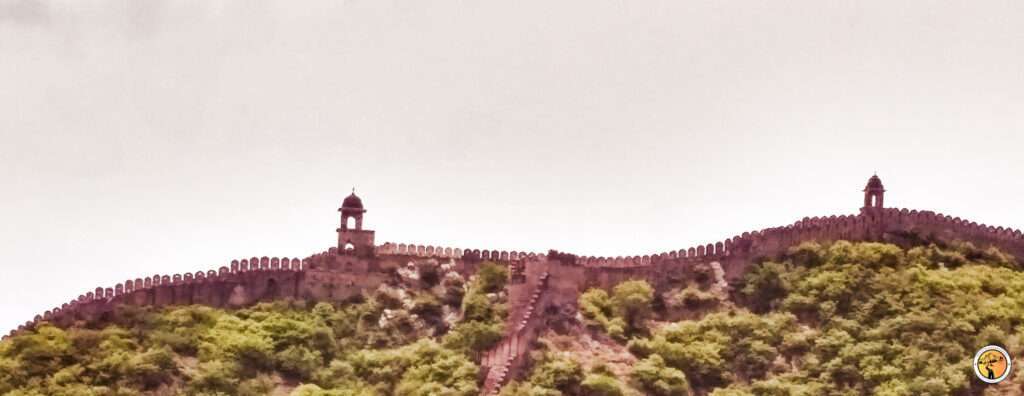
Military Significance:
Jaigarh Fort was a centre of artillery production for the Rajputs. During the reign of the Mughal Emperor Shah Jahan, Jaigarh Fort, which is located just 150 miles south-west of Delhi, became one of the world’s most efficient cannon foundries mainly due to the abundance of iron ore mines in the vicinity of the fort. The cannon foundry at Jaigarh Fort had a massive wind tunnel that sucked air from the high mountains into its furnace, creating temperatures as high as 2,400 °F (1,320 °C). This heated air would melt the metal.
The impregnable Jaigarh fort houses the famous Jaivana and Bajrang-vana cannons. The Jaivana cannon, was the world’s largest cannon on wheels when it was built in 1720. It is placed at the Doongar Gate. The barrel of the cannon weighs 50 tons and its length is 20.2 feet. The barrel is adorned with carvings of trees, an elephant scroll and a pair of birds. The cannon was built on the orders of Raja Jai Singh II and has been fired only once to test its range. It is believed that the test fire required 100 kgs of gunpowder and 50 kgs of iron and covered a distance of 35 kilometres. In order to guard the cannon from extreme weather conditions, a tin shed was built. A plaque which is displayed at the entrance to the enclosure provides a more detailed description of the history of the cannon, its size and its use.
Bajrang Vana was built in 1691 in the foundry. During wars, this cannon was driven by 32 oxen to the battlefield. The cannon consists of iron sleeves which makes it quite heavy.
The Myth of Royal Treasure in the Jaigarh Fort:
A compelling treasure myth has grown in the Jaigarh fort. Water was a precious commodity for the inhabitants of the Fort. Water supply was facilitated through impressive water harvesting structures which were created in the Aravalli catchment and this was then conveyed to the fort through canals. Finally, the transported water was stored in three massive underground water tanks below the central courtyard of the fort. The largest tank has a capacity of 6 million gallons of water. Haft Tilismat-e- Amberi, an Arabic text, mentions that royal treasure belonging to the Kachwaha rulers is hidden deep inside one of these tanks. Another legend was that Raja Man Singh I brought back treasure from Afghanistan and had it hidden in the water reservoirs. This contributed to rumors that there was indeed treasure in Jaigarh fort. There have been many high profile treasure hunts but none have been successful yet.
Things to do at Jaigarh Fort:
- Visit the armoury chamber which has a wide display of swords, shields, guns, muskets and a 50 kilograms (110 lb) cannonball.
- Checkout the pictures of Jaipur’s former Maharajas, Sawai Bhawani Singh and Major General Man Singh II.
- Visit the museum which is located to the left of the Awami Gate. This museam exhibits photographs of the Royalty of Jaipur and also has stamps and other artifacts, which include a circular pack of cards.
- Check out the Jaivana Cannon which is the largest cannon in the world.
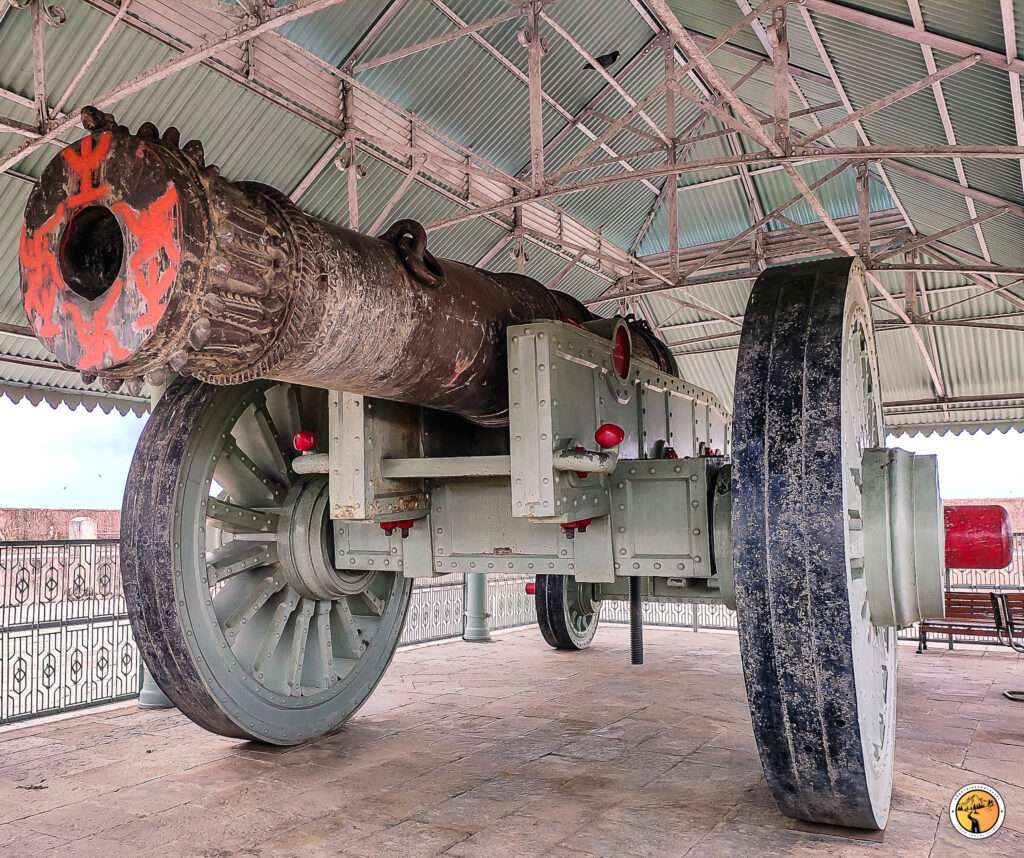
Interesting Facts
- This magnificent fort is connected to Amer Fort through subterranean passages. These passages were built to function as escape routes for the royal family members, in times of war.
- This fort is known as the ‘Fort of Victory’ as it was never conquered.
- This fort is home to the world’s largest cannon on wheels which is known as “Jaivana”.
- Jaigarh Fort was the Pit Stop of the 6th leg on the American reality show The Amazing Race 14.
- Jaigarh fort along with the Amer Fort was declared as a UNESCO World Heritage Centre in 2013.
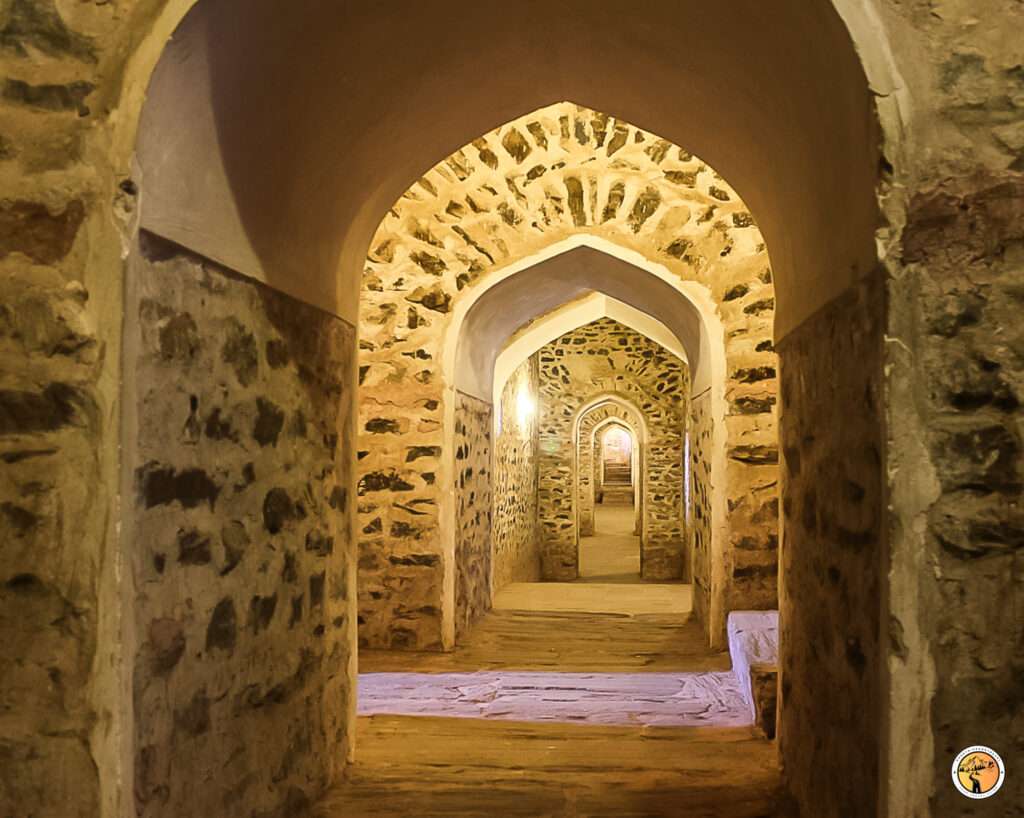
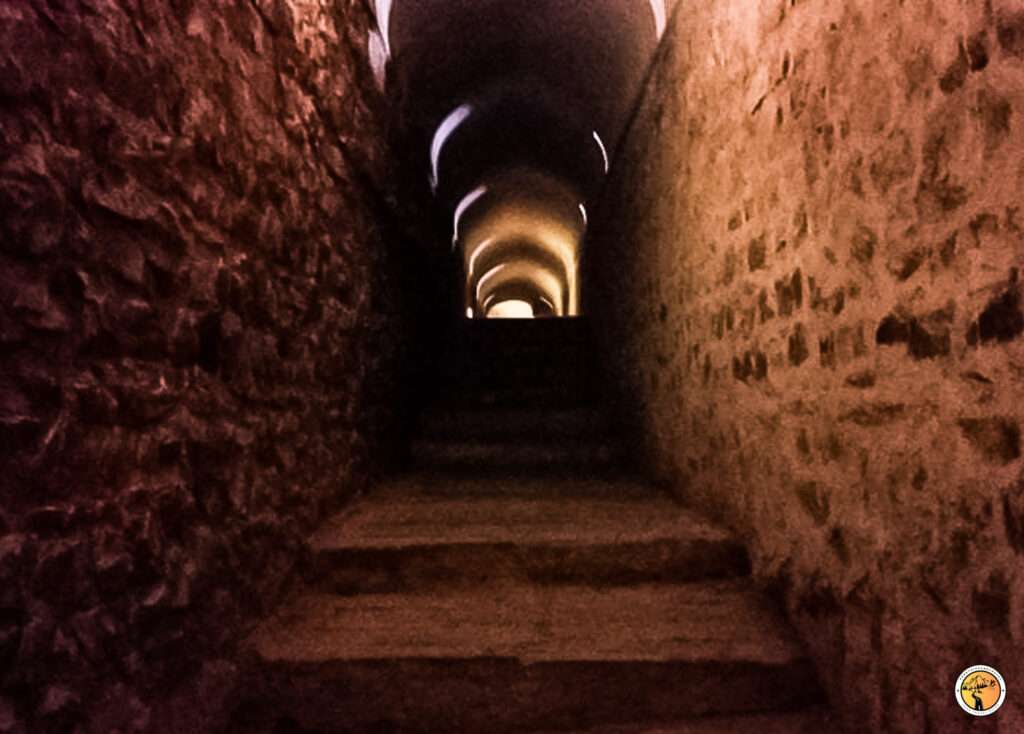
Travel tips while visiting Jaigarh Fort:
- It is advisable to hire a local guide to visit Jaigarh Fort. Another option is to get an audio guide. Having a guide will give you a very good understanding of the structure of the fort and also provide interesting anecdotes from history.
- If you are traveling in summer, always carry hats/scarves/umbrellas and sunscreen to keep the scorching sun away. Drink lots of water and be hydrated.
- Wear comfortable shoes as there will be a lot of walking inside the Fort.
- Visit on a weekday rather than the weekend, if you want to deal with lesser crowds.
- The best time of the year to visit Jaigarh fort is November-February, when the weather is considerably cooler.
- It is not advisable to stay in Jaigarh Fort after the gates close. Jaigarh Fort is surrounded by a thick deciduous forest and the Nahargarh sanctuary which is home to many wild animals. So plan to be there early and get back to the city before nightfall.
Nearby Attractions:
- Amer Fort
- City Palace
- Jantar Mantar
- Hawa Mahal
- Jal Mahal
- Nahargarh Fort
Shopping in Jaipur’s Vibrant Bazars:
Jaipur is one of the most popular shopping destinations in India. Traditional Jewelry, Ethnic Handlooms & textiles, leather goods, handicrafts, souvenirs and other exotic artifacts draw tourists from all over the world to Jaipur. Check out the link below for more information on some of the most famous bazars in Jaipur.
Where to Stay and Dine in Jaipur?
If you want to treat your taste buds to a unique culinary experience and make your stay memorable, then check out these fabulous options on where to dine and stay in Jaipur.

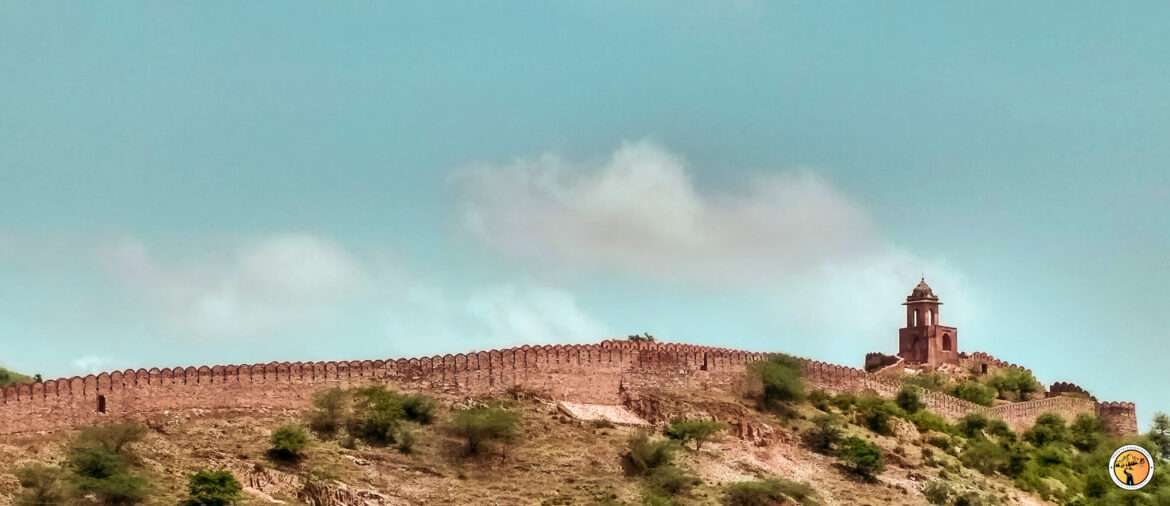
Leave a Reply